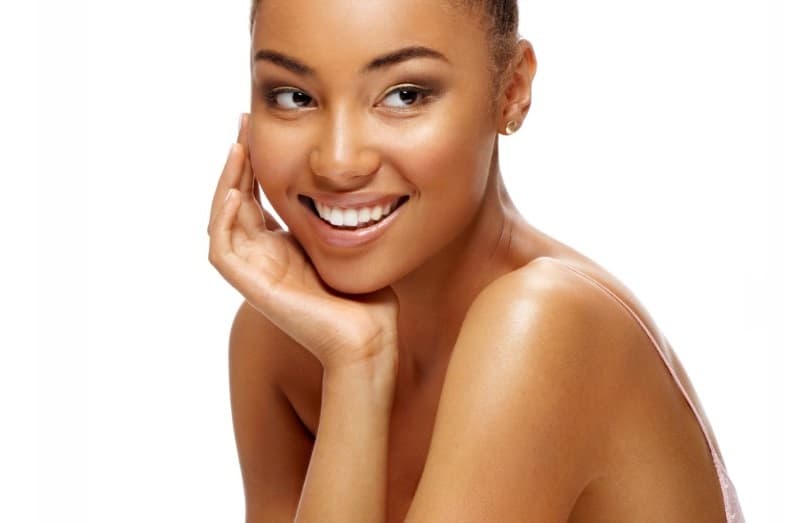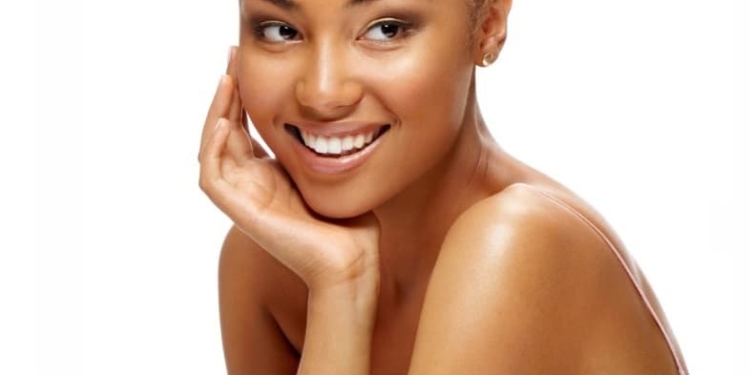Have you ever looked in the mirror and thought, “My skin is unique; it’s not light, medium, or dark. It’s something else entirely”? If so, you might have what’s known as caramel skin tone.
Caramel skin is a special and often underrated tone that people of color often share. It has its own set of needs when it comes to care. As someone with caramel skin, you want to make sure you’re taking the best possible care of your unique complexion.
So first things first: what is caramel skin exactly? In this article, I’ll explain what makes this tone different from other shades and offer some tips on how to maintain your stunning caramel-hued complexion. Read on to learn about caramel skin!
What is a Skin Tone?
A skin tone is a type of color or pigment of the skin. It is the result of several factors, such as genetics, the amount of melanin in the skin, and the amount of exposure to the sun. Skintone is a broad spectrum and includes a variety of complexions ranging from deep dark pigmentation to light porcelain complexions.
What is Caramel Skin Tone?

Caramel skin tone is a warm, golden-brown hue. It is often seen in people of Middle Eastern, African, Caribbean, and Latin American descent. While skin tones are unique to each individual, they can all be broadly classified into different categories.
So how does this particular tone vary from other skin colors? While all caramel skin faces still have to contend with the same environmental aggressors like UV rays or dry air, this type of complexion tends to be richer in melanin than other tones. This means that the sun’s rays are better absorbed, and the skin can naturally defend itself against environmental damage.
The key to keeping a caramel skin tone looking its best is regular hydration and protection. As part of your daily skincare routine, use a moisturizer with SPF 30 or higher to protect against UV rays and pollution. And be sure to apply a nourishing night cream or serum every night before bed; this will help keep your skin cells visibly radiant while you sleep.
Properties of Caramel Skin Tone
If you have caramel skin, you have something to be proud of. This warm, light-brown skin tone is associated with a range of positive qualities and unique beauty. Let’s look at some of the defining characteristics of caramel skin.
Complexion
Caramel skin has a golden hue that sometimes appears more yellow or honey-colored depending on the individual’s undertone. It’s often described as “warm,” and it has a pleasant glow to it that catches the eye from across the room.
Rich Melanin
Caramel skin tends to have higher levels of melanin, which helps to absorb more of the sun’s rays and protect it from environmental damage.
Hair Color
Caramel skin usually comes with dark or brown hair, although subtle variations in colors like chestnut and coffee are also seen. Hair texture can vary as well: curly, straight, or anywhere in between!
Eye Color
The eyes can range from medium brown to an intense shade of black, though hazel is also possible.
Warm Undertones
Caramel skin has a warm, sun-kissed glow. Undertones of this complexion tend to range from yellow to olive, giving it a unique and beautiful look.
Age Gracefully
Caramel skin has the ability to maintain its youthful appearance for longer, as melanin helps to ward off wrinkles and other signs of premature aging.
Easily Irritated
Caramel skin is also more prone to dryness and irritation and will require extra hydration to keep it in top condition.
Overall, caramel skin is a beautiful complexion that reflects the confidence and vigor of its owner. With careful attention to skincare maintenance, you, too, can enjoy this luxurious look!
How to Determine Your Skin Tone
Before you can begin to learn how to maintain your gorgeous caramel skin, you need to figure out how to determine your skin type. Luckily, it’s not as complicated as it may seem and doesn’t take a lot of effort. Here are four ways for you to check and really pinpoint what skin tone best aligns with you:
Natural Light Test
The best way for you to find out your exact skin tone is by going outdoors on a sunny day and analyzing your skin in natural light. Natural light will help reveal the true color, and you can then compare that shade with the different skin tones, from fair to deep.
Paper Test
Grab a few items, such as a white sheet of paper, a yellow sheet of paper, and a mirror. Look at your face in the mirror and compare your skin tone to the white and yellow sheets of paper. If your skin leans more toward the yellow, you have a caramel complexion. If your skin is more pinkish, then you might have a fairer skin tone.
Vein Test
If you’re unable to go outside and bask in the sun, then use the vein test! All you have to do is look at the color of your veins on the inside of your wrist. If they are bluish-greenish in tint, then that usually means that you have a cool or pale complexion. If they are greenish-olive in hue, then chances are that you have an olive or warm-toned complexion. And if they appear more blue than anything else, then you fall on more of the deep end of the complexion spectrum.
Jewelry Test
As strange as this may sound, there is actually a scientific basis for using jewelry tests when finding out about one’s complexion range. If silver looks better on your skin than gold or yellow hues, this often means that your undertones are cool-toned, such as pink or blue hues (porcelain). On the other hand, if gold or yellow hues look better than silver or gray hues, then this
Tips for Maintenance of Caramel Skin
Now that you have a better understanding of caramel skin let’s talk about how to maintain it. Here are 8 top tips to keep your caramel skin looking its best:
Cleanse and Exfoliate
Cleansing and exfoliating are key in maintaining your caramel skin tone. Gentle cleansers help remove dirt and oils from your skin, while exfoliating is essential for sloughing away unwanted dead skin cells. Be sure not to overdo it though too much exfoliation can cause irritation or inflammation.
Sunscreen
Caramel skin is prone to sun damage, so wear sunscreen with a minimum SPF of 30 every day, even when indoors or in the car. Make sure that the sunscreen you choose is suitable for your face, as this will avoid clogged pores and other issues.
Moisturize
Moisturizing your caramel skin keeps it hydrated and protected from the elements. Look for moisturizers that have antioxidants and active ingredients like retinol, Vitamin C, niacinamide, and ceramides, as they can help reduce dark spots and even out discoloration.
Apply an Eye cream
To reduce the appearance of puffiness around the eyes and dark circles, try an eye cream that contains aloe vera and jojoba oil for a brightening effect without irritation.
Sleep & Hydrate
Make sure you get plenty of sleep each night, a minimum of seven to eight hours, as this helps reduce puffiness under the eyes, dark circles, breakouts, and premature aging. Drink plenty of water throughout the day, too; eight glasses should do the trick!
Facials
Getting regular facials can keep your caramel skin looking fresh and radiant. Opt for deep cleansing facials with hydrating ingredients that can leave your complexion glowing afterward.
Select Appropriate Makeup Products
It’s also important to use makeup products that won’t irritate your caramel-colored complexion. For instance, look for makeup products labelled “non-comedogenic,” which means they won’t clog pores or lead to breakouts. Also, consider going minimal with makeup; less is often more when it comes to caring for caramel skin!
Conclusion
So, if you have that perfect caramel skin tone, you need to start looking after it and being mindful of what you use on it. Use light, gentle, and natural products, and don’t forget to SPF! Not only is SPF the most important weapon in your skincare arsenal, but it’s also essential for protecting your beautiful caramel skin tone.
Overall, caramel skin owners are incredibly blessed with their skin tone. It’s wonderful, it’s strikingly attractive, and it’s all yours. So, look after it the best you can, and all you have to do is keep your skincare routine simple and consistent, and you’ll be golden.


Discussion about this post